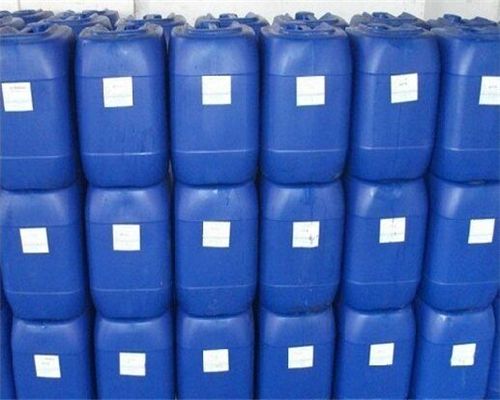How big is the battery pollution hazard?
According to experts, a button battery can pollute 600,000 liters of water; a No. 1 battery rots in the ground, which can make a square meter of land useless. Experts pointed out that if used batteries are mixed with household waste, after the batteries rot, the dissolution of heavy metals such as mercury, cadmium, lead and nickel will pollute the water and soil, and ultimately endanger human health through the food chain. If people are poisoned by mercury, they will suffer from central nervous system diseases with a mortality rate of up to 40%; cadmium is classified as a IA-class carcinogen.
There are three types of batteries in the five substances that pose the greatest threat to the natural environment: mercury, lead, and cadmium.
Mercury: It is commonly known as "mercury" and has carcinogens. Both mercury and mercury are toxic. Scientists have found that mercury has significant neurotoxicity, and it also has adverse effects on the endocrine system, immune system, etc., and children are more vulnerable.
Cadmium: It is easy to cause chronic poisoning in the human body. It is a very toxic heavy metal. The main symptoms are emphysema, osteomalacia, anemia, and it is likely to cause paralysis. When lead enters the human body, it is the most difficult to excrete. It interferes with kidney function and reproductive function. Japan’s “pain and pain†that shocked the world was caused by cadmium pollution. The cadmium-containing mine wastewater pollutes the soil, food, and pasture on both sides of the river and the river, and slowly accumulates through the food chain into the human body, in the kidneys and bones. Will replace the calcium in the bone, so that the bones are severely softened, bones broken; cadmium can cause gastric dysfunction, interfere with the body and the body's zinc enzyme system, so that the zinc-cadmium ratio is reduced, leading to increased hypertension. Cadmium toxicity is potential. Even if the cadmium concentration in drinking water is as low as 0.1 mg/L, it can accumulate in human tissues (especially women), and the incubation period can be as long as ten to thirty years, and it is not easy to detect at an early stage. The data show that the biological half-life of cadmium in human body is 20 to 40 years. The toxicity of cadmium to human tissues and organs is multifaceted and treatment is extremely difficult. Therefore, countries have imposed strict regulations on cadmium in the “three wastes†of industrial emissions. Japan also stipulates that rice containing more than 1 mg/kg of cadmium is “cadmium rice†and is forbidden to eat. Since cadmium compounds have different degrees of toxicity, removing cadmium from wastewater by any method can only change the existence of any method to remove it from wastewater, and only change its existence mode and transfer its existence, and can not eliminate its toxicity. Therefore, the treatment of cadmium wastewater should be combined with recycling as much as possible.
Nickel: It is carcinogenic and has obvious harm to aquatic organisms. Nickel salt can cause allergic dermatitis;
Lead: causes anemia, neurological dysfunction, kidney damage, and is more harmful to children.
Cleaning Agent:
The difference between organic cleaning agent and inorganic Cleaning Agent simply, cleaning agent cleaning agent is made of organic compounds containing carbon, cleaning agent made of inorganic compounds, cleaning agent is not containing carbon, therefore they belong to the inorganic. Classification method of cleaning agent is also a lot of countries are not the same, we usually divided into water, half water, non water cleaning agent three categories.
How to select a good cleaning agent:
The chemical stability, not easy to be cleaned and reacts; the surface tension and viscosity, strong penetration; the low boiling point, can be dry; there's no flash point, non flammable; the KB value should not be too high, not miscible with the material to be washed; the low toxicity, safe use; and non ODS and low GWP value (global warming potential), and environmental protection.
Application Requirement:
For chemical industrial cleaning, should meet the following requirements.
The cleaning agent used for cleaning purposes and different cleaning objects, can be emphasized or choice for these requirements. The dirt cleaning speed, dissolving dirt thoroughly. The cleaning agent itself has a strong reaction to the dirt, dispersed or dissolved scavenging capacity and in the limited time, can thoroughly remove dirt. The cleaning of the object damage should be in production license limits, and corresponding control measures for corrosion of metals may cause. The cleaning agent is cheap and easy to get, set foot on the localization; low cleaning cost, does not cause too much the consumption of resources. The cleaning agent on the biological and environmental non-toxic or low toxicity, the generated gas, waste water and waste residue, should be able to be disposed to comply with relevant state regulations. The cleaning condition is mild, try not to depend on the force of export The strengthening conditions, such as temperature, pressure, mechanical energy and does not require excessive requirements. Such as the cleaning process in the cleaning surface of the object remains insoluble, does not produce new stain, do not form a new harmful to the subsequent process of covering layer, does not affect the quality of the products. It does not affect the bubble and smell the cleaning process and on-site health.

Cleaning Agent
Cleaning Agent,Washing Agents,Pcb Cleaning Agents,Cleaning Decoloring Agent
VESTA Motoring Ltd , http://www.vesta-industry.com